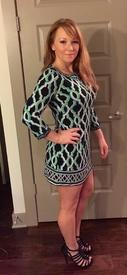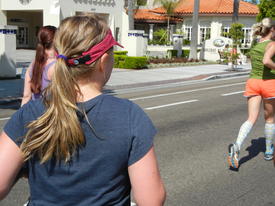Good article on "barefoot running".....

Azdak
Posts: 8,281 Member
Higher on facts, lower on ideology.....
http://www.lowerextremityreview.com/
There are several noteworthy aspects to the article, that I think are germane to many, if not most, fitness "trends". The first is that most issues involving human physiology are complex and nuanced. There are very few black and white answers. Doing research can be a challenge because it can be difficult to isolate variables and keep out confounding effects. Sample sizes are often small and studies can show variable results. Often it can take years and numerous studies for a consensus view to emerge, if at all.
Another is that, given the variability in human beings, there are often differing responses to the same situation. In the case of "barefoot running" it may very well be that both "camps" are correct. There may be some foot types and running styles that do better with minimalist footwear and others that need more structure.
There is also what might be referred to as the law of unintended consequences. Part of the article addresses the idea that, while minimalist running might solve some known issues for some runners, it may lead to other problems as yet unknown.
All of this leads to a principle that should be kept in mind when adopting any new fitness idea or trend--it is a mistake to assume that what might work for you will work for everyone; that there is one "right" answer, technique, routine, etc that is best for everyone.
Hope you find it interesting.
http://www.lowerextremityreview.com/
There are several noteworthy aspects to the article, that I think are germane to many, if not most, fitness "trends". The first is that most issues involving human physiology are complex and nuanced. There are very few black and white answers. Doing research can be a challenge because it can be difficult to isolate variables and keep out confounding effects. Sample sizes are often small and studies can show variable results. Often it can take years and numerous studies for a consensus view to emerge, if at all.
Another is that, given the variability in human beings, there are often differing responses to the same situation. In the case of "barefoot running" it may very well be that both "camps" are correct. There may be some foot types and running styles that do better with minimalist footwear and others that need more structure.
There is also what might be referred to as the law of unintended consequences. Part of the article addresses the idea that, while minimalist running might solve some known issues for some runners, it may lead to other problems as yet unknown.
All of this leads to a principle that should be kept in mind when adopting any new fitness idea or trend--it is a mistake to assume that what might work for you will work for everyone; that there is one "right" answer, technique, routine, etc that is best for everyone.
Hope you find it interesting.
0
Replies
-
bump0
-
Barefoot running is really comfortable for me, wish I could do it now but it's snow and ice outside, probably not a good idea!0
-
Thx for the article
I love "barefoot" running so far.0 -
Excellent article. Barefoot running was recommended to me by my podiatrist because of my specific strike pattern. He also cautioned that the transition needed to be made sloooowly with a specific training plan. I hope people know that before jumping in.0
-
Thanks for posting this.
All you have to do is look at people's feet to know that one solution (running style or shoe) is not going to work for everyone. But I'm glad to see some medical acknowledgement that the solution to injuries may not always be a stiffer, more-cushioned, shoe. When I sought medical help back 15 years ago for my awful achilles tendonitis and planar fasciatis, that was always the advice I received, and it resulted in making my condition worse.
It took me over a decade to find a running style that works for me and my fitness is now the better for it.0 -
My son has been researching this topic and did a paper on it for university, HK program. He has been running barefoot over the last year, but gradually. This is a topic that more people should be aware of. There are shoes that you can get that are like gloves, that protect your feet. Anyone intrerested, educate your self first. I am thinking about trying it at some point, maybe when the weather gets warmer. Nice to see this topic on here. Great. I will pass this article over to my son. Thanks. Mia :bigsmile:0
-
This topic peaked my interest, because I've found I have much more success when I do my cardio videos barefoot. I feel I have a lot more balance, and if I wear running shoes, I feel totally clumsy.
I don't know if the two can be compared (running vs. cardio videos) but I just thought I'd add what I've noticed
L.0 -
When I was 20 years younger, I used to run about 5 miles a day. By the time I was in my 30s, I had gotten away from running. Each time I tried to start a running program, I was plagued by severe shin and ankle pain which no one seemed to know how to fix. I'd try again every few years, and always got the same result. Earlier this year, I started the C25K with minimalist shoes. It was the first time in 20 years I'd been able to run without pain. After several months, I did develop a foot injury (presumably from over training).
This time my doctor did not try to talk me out of running, and didn't try to discourage me from the minimalist footwear, either. Instead, he recommended I take 6 weeks off of running to let the foot recover, and then start again in a pair of well-fitted running shoes. After I got my mileage back up and felt my foot was back to normal, he said to try the minimalist shoes again. I am still using the running shoes, and having no pain with them. I really believe the experience running in minimalist shoes taught me to run without pain. Something changed dramatically in the way I was running, and at this point, I think I could probably run in either shoe type with success.
Anyone who does want to try minimalist shoes or really go barefoot should absolutely look for a program to follow that lets them SLOWLY build up. While it was a good move for me overall, I can tell you it is fairly rough on the little muscles in your feet, especially for the first couple of weeks.0 -
I'm not sure what conclusion to draw, but I am curious about the general tone of comments in response to this topic. The general interpretation seems to be that the article I posted was mostly in favor of the minimalist/barefoot running style. I read it to be much more skeptical and pretty definite that a) barefoot running was not for everyone and those who were proposing it as a "one size fits all solution" did not have solid research to support the position; b) solid research pro or con was still very sketchy and much more work remains to be done; much of the supposed "research support" was equivocal and anecdotal and c) there was a very good chance that while barefoot running might be an answer to some of the problems caused by shoes, over time it was going to be revealed that barefoot running would cause different types of overuse problems.
My interpretation is that the article was a clear warning to look closely before jumping on the minimalist bandwagon.0 -
Yes, I understood your take on it, and I agree (didn't mean to sound otherwise or as if I had misunderstood you). For me, the bigger message is to pay attention to your body when you're exercising, whether running, biking, lifting, etc. The one-size-fits-all doesn't work for clothes or anything else, in my opinion.
Right now, I am feeling so good in the conventional running shoes, that I will probably be using the barefoot shoes mostly for the elliptical and indoor cardio videos (as a previous poster mentioned, I find this way more comfortable than regular athletic shoes).
I do hope people will find a store that can properly fit them in quality running shoes. I've spent a small fortune on shoes that were supposedly well fitted, but my most recent experience was the best and most successful. This involved the shop videotaping my feet while running, and then making suggestions on shoes and inserts. May sound like it's over the top, but it worked.
As always, thanks for posting and keeping us in the loop about the current research. I appreciate it very much!0 -
Thank you for the post. This article brings up so many great points for both sides. And most importantly caution in switching from one to another.
I am a natural toe jogger (as my 7th grade PE coach said it looked like I was leaping from lily pad to lily pad). I think it was because I was always doing gymnastics barefoot. I've gotten criticism from gym trainers about always being on my toes- I'm glad there is information out there that says- well that's not necessarily a bad thing- regardless of whether you are barefoot or not.
As far as Born to Run- I hope all sides will pick that book up. It's overall just an amazing story about running, athletes, and the human mind/spirit.0 -
Bump.
I've recently finished Born to Run and agree that as a book it is amazing. While some good points were made and I will go read this article as well, I won't hop on a bandwagon like barefoot running while it is 20 degrees out (even with "shoes") and I have never really been injured (knock on wood). The little knee pain I have is from my IT band and it disappears with proper strength/stretching.
Don't know if I will ever go "barefoot", but thanks for the information!0 -
Interesting article. I grew up going barefoot most of the summer and still spend as much time as possible that way when it is warm. I read Born to Run and have been thinking of giving this a try. In fact, my reward for reaching my December weight loss goal is a pair of Vibram FiveFingers (I am 1.5 pounds away from December goal). I mostly wanted them for the summer as I think that they would be more comfortable than flip flops.0
-
Very interesting article, I recently read Born to Run as well & it definitely made me pause to *think* about my training strategy. Coincidentally, I just bought Nike Free shoes to use 1x weekly for track sessions / short runs. In addition, I have always thought that some barefoot strength training (yoga, pilates, etc) is beneficial, ever since my childhood/teenage days as a gymnast when barefoot calf raises gave me super strong (and shin splint-resistant) legs.0
-
Interesting article. I run in Newton Running Shoes which are "barefoot style" although they are far from minimalist. They are designed with forefoot striking in mind and so have more cushioning there. I switched from heel-striking to forefoot-striking about a year ago and the transition was difficult. I lost a lot of speed and endurance which I have had to re-build over time as forefoot striking hits your muscles and tendons differently than heel striking. Some differences I noticed: with heel striking, I would get knee pain occassionally and my quads and hamstrings would be sore; with forefoot striking, I have not experienced any joint pain (huzzah!) and my calves and hip flexors get sore. I did have some achilles tendon soreness once and was very careful to let that heal before resuming running but overall I am happy with the switch. I would recommend it based on my anecdotal experience.0
-
I'm not sure what conclusion to draw, but I am curious about the general tone of comments in response to this topic. The general interpretation seems to be that the article I posted was mostly in favor of the minimalist/barefoot running style. I read it to be much more skeptical and pretty definite that a) barefoot running was not for everyone and those who were proposing it as a "one size fits all solution" did not have solid research to support the position; b) solid research pro or con was still very sketchy and much more work remains to be done; much of the supposed "research support" was equivocal and anecdotal and c) there was a very good chance that while barefoot running might be an answer to some of the problems caused by shoes, over time it was going to be revealed that barefoot running would cause different types of overuse problems.
My interpretation is that the article was a clear warning to look closely before jumping on the minimalist bandwagon.
I certainly agree on points A and B that you took from the article. I am not sure that the studies support that "barefoot running" (itself) will cause these new types of injuries. The article acknowledges numerous conditions that could factor into the probability of injury (including running style, evenness of running surface, surface hardness, fitness, and the amount of running actually being performed). Until the research isolates each of these conditions, I think it's hard to come away with any conclusion other than "more study is needed". Additionally, I would add the caution that "overuse/overtraining/running with lack of variability" would likely increase the chances of injury regardless of running style.
I'm no expert, and look forward to reading more research. In the meantime, I feel comfortable in continuing my approach (moderate running and training both barefoot and with minimalist footwear), all the while listening closely to my body and taking additional precautions to minimize the chances of injury. And most importantly, I hope everyone finds a solution that works for them and removes the barrier of chronic injury to fitness.0 -
I started running barefoot this summer after having problems with plantar fasciitis.
It's wasn't so much the shoes, but the running technique that helped improve my condition. I researched "Chi-running' by Danny Dreyer and also attended a local Meet-up.com clinic on barefoot running in the Chicago area.
My running greatly improved over three months, but by the end, I think I was overdoing it.
I later began to have pain in the midfoot. (It was then Autumn and I stopped running because it was too dark to see the ground at 5:30am, when I do my usual workouts.)
My midfoot feels much better now, but I'm again feeling some pain in my right heel. (Despite prescribed orthopedic insoles.) I plan on barefoot running again in the spring.
For anyone with foot problems, I'd recommend trying out the 'Chi-running' method... It seems to help prevent injury whether you run shod or not.0 -
(bump) many thanks!0
This discussion has been closed.
Categories
- All Categories
- 1.4M Health, Wellness and Goals
- 395.7K Introduce Yourself
- 44.1K Getting Started
- 260.7K Health and Weight Loss
- 176.3K Food and Nutrition
- 47.5K Recipes
- 232.8K Fitness and Exercise
- 448 Sleep, Mindfulness and Overall Wellness
- 6.5K Goal: Maintaining Weight
- 8.6K Goal: Gaining Weight and Body Building
- 153.2K Motivation and Support
- 8.2K Challenges
- 1.3K Debate Club
- 96.4K Chit-Chat
- 2.5K Fun and Games
- 4.3K MyFitnessPal Information
- 16 News and Announcements
- 1.4K Feature Suggestions and Ideas
- 2.9K MyFitnessPal Tech Support Questions












